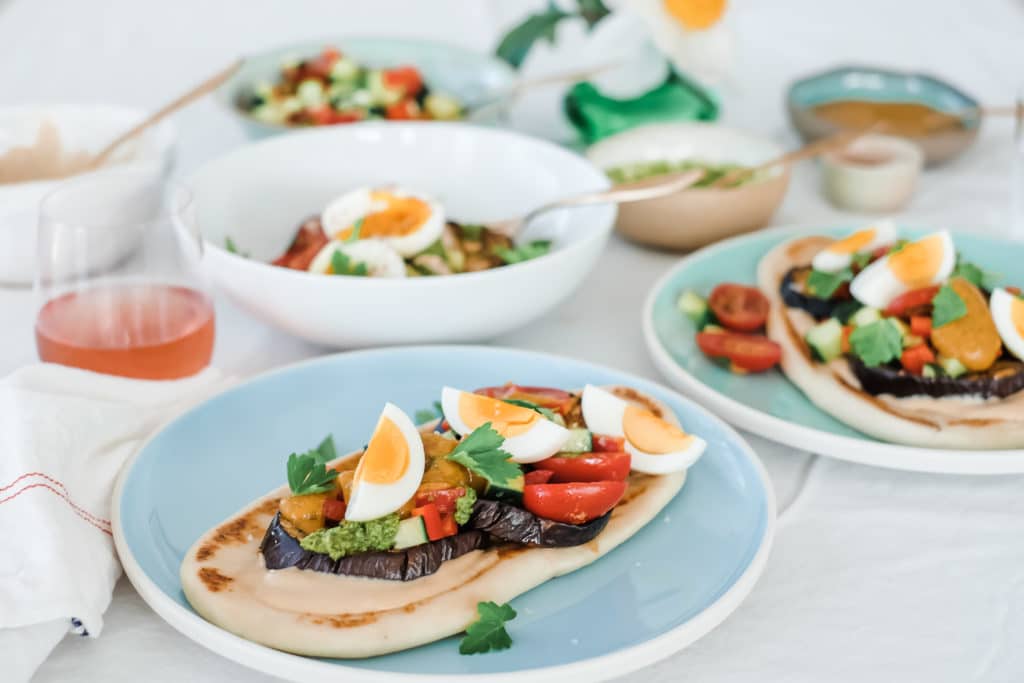
We've just started thinking about our next trip to Israel, probably next June. I think this will be my sixth trip, and I never get tired of it. Part of that is spending time with our family there, but it's also that I feel like every visit develops my relationship with the land and its history, and my experience with my faith. You can read about some of my past trips here, here, here and here.
I'd love to combine a trip to Israel with one to Spain and Portugal, because I've never been to either. And over the next few years, our travel wish list contains child-friendly features like easy transportation, beaches and attractions Theo can enjoy. I have a bucket list of all the places to see and things to do with Theo before he turns 18, which everyone tells us will come in a blink of the eye. Cruising from Argentina to Antarctica to see the penguins, a safari in South Africa, an exploration of India--they are all on the list.
When we landed in Israel last October, I got off the plane craving sabih, but I didn't get to eat one (or three) until we arrived in Jerusalem our last week. Too many other choices, I suppose. If you've never heard of sabih, it's basically a pita stuffed with fried eggplant and Israeli salad (chopped tomatoes, peppers and cucumber) and garnished with tahini sauce, a spicy-herby sauce called zhug, and amba, a fermented mango sauce. Some places add hummus, some onions, but that's the basic formula. And it's addictively delicious. Since I couldn't wait until my next visit to Israel to eat sabih again, I developed a good stand-in recipe.
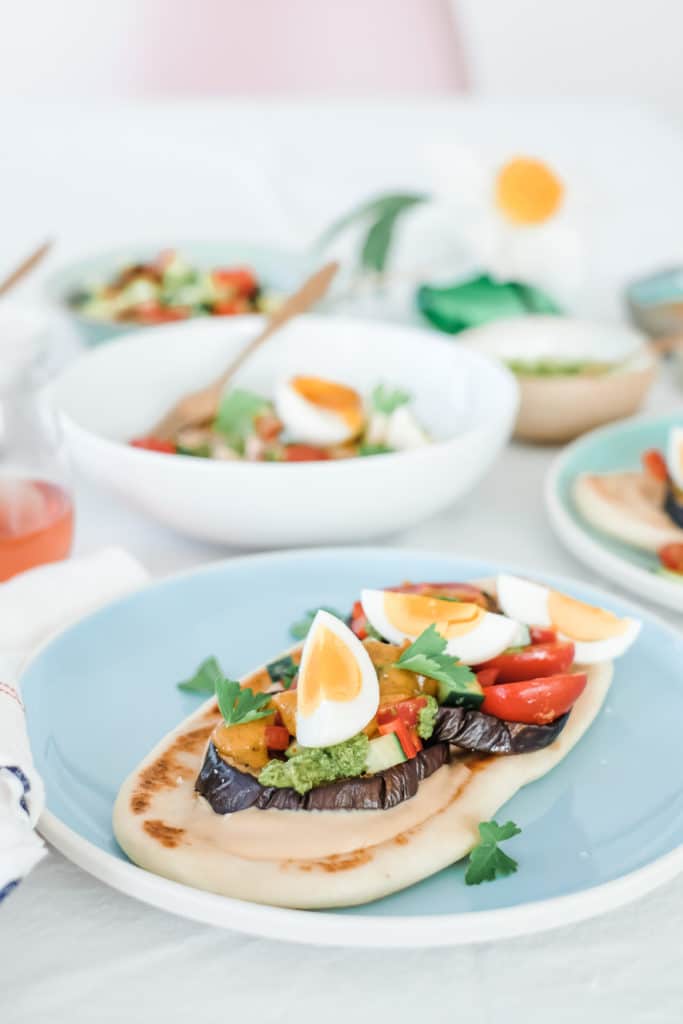
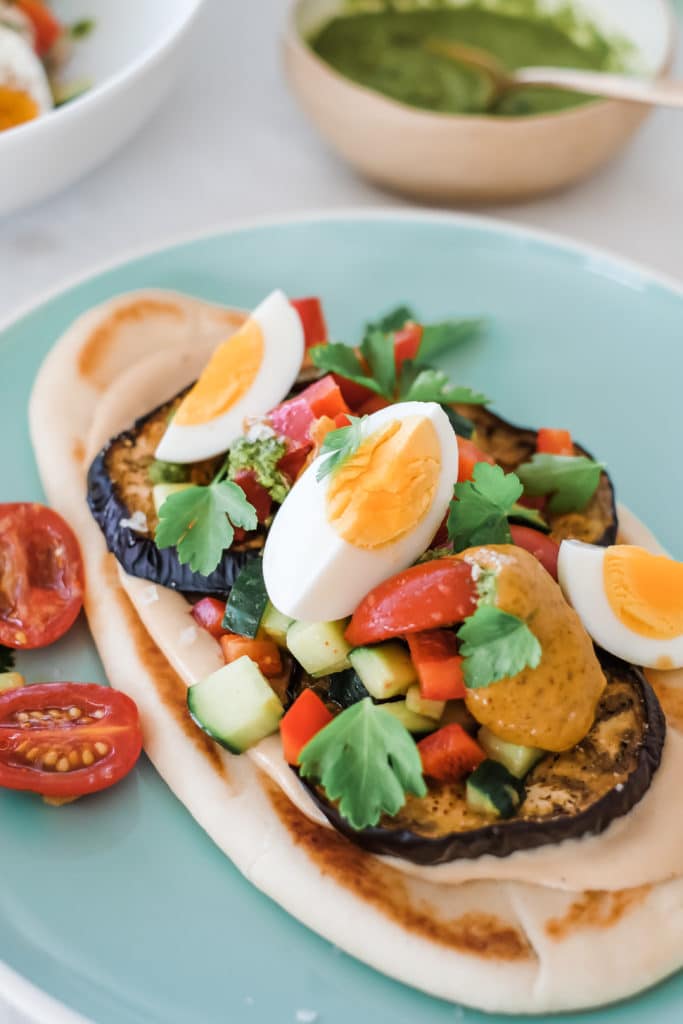
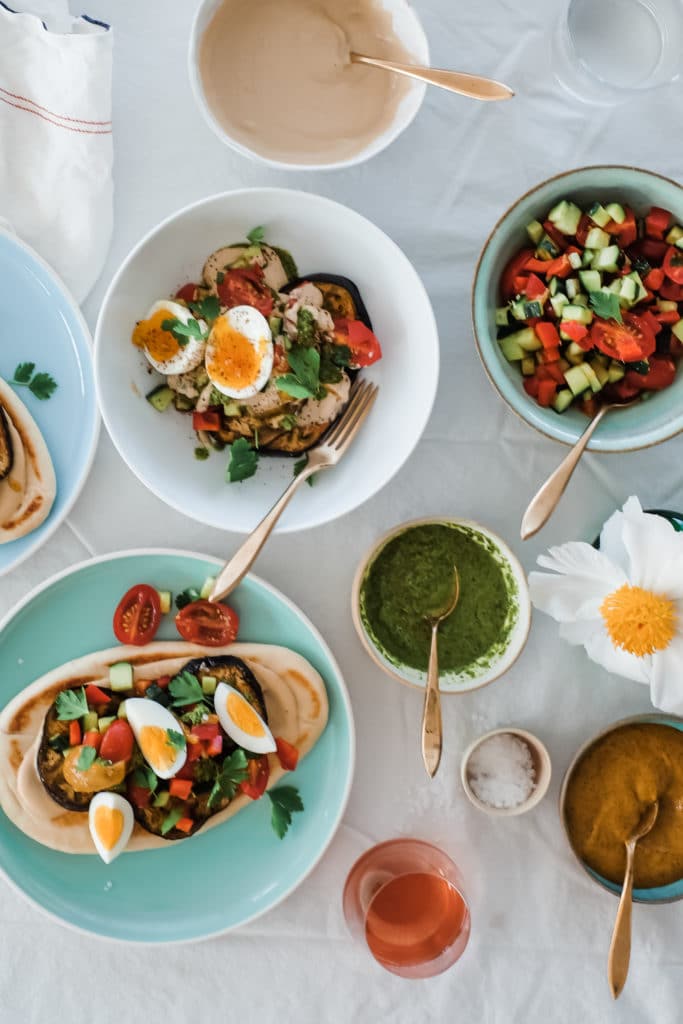
Pita in Israel is an entirely different product than the dry, flavorless pita found in the United States. In Israel, pita is soft and fluffy, able to soak up all the sauces of the kebabs, falafel or sabih. It's ubiquitous. Here, I've found that naan actually makes a better substitute for Israeli pita. It obviously doesn't have the pocket, but the texture is more similar. You can fold it over and eat it like a pita, which is exceedingly messy and satisfying. Also, you can turn the components of the sabih into a salad, which is still quite tasty. I'd just bulk it up with the addition of some good greens.
In Israel, the eggplant for sabih is fried, but I think that roasted eggplant is easier, less messy and a great substitute. Just make sure and cook the eggplant all the way through until it's very soft, but don't let it bake until it dries and becomes crispy. Also, don't skimp on the olive oil. It's needed to soften the eggplant and make it delicious.
There are a lot of components to this dish, so it may seem daunting. But the tahini sauce, zhug and amba will all keep in the refrigerator for at least five days, so you can use it on a million different things. Tahini sauce is delicious on vegetables, drizzled on roasted meats, used as a dip for vegetables. Or eaten with a spoon, which I'm guilty of doing. And the zhug can be used as a hot sauce or herby sauce on anything from tacos and enchiladas to burgers or fish, to roasted vegetables. It's so good.
If you're not familiar with amba, it's a pickled, fermented mango sauce, similar to a mango chutney, but spicier and not too sweet. In the Middle East, amba is made by salting green mangos and allowing them to sit in the sun and ferment for five days, before simmering them with spices. The fermentation produces intense, pungent and almost effervescent flavors that are addictive (if you like that kind of thing). I love it. This version is a lot more simple to make, but still has a lot of flavor. Use it on grilled meats, falafel or anywhere you would use a mango chutney.
I hope you enjoy making this at home! It's one of those recipes that can be good for a casual dinner party, because you can put out all of the ingredients and let everyone build their own. And if you do make it, please let me know what you think! I love hearing when people make my recipes. It make me very happy.
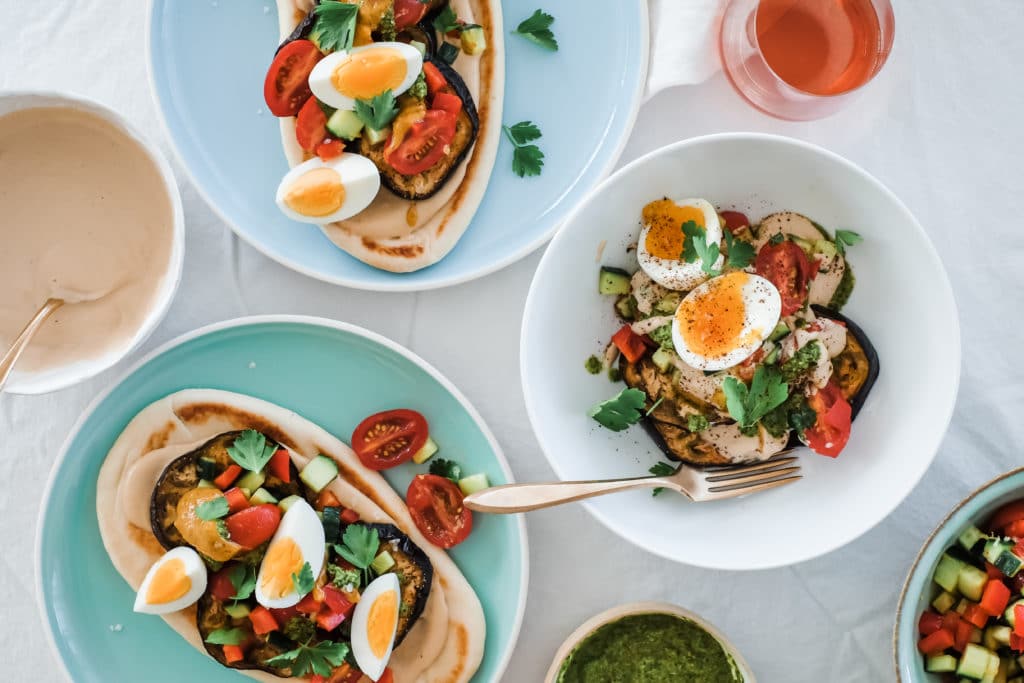
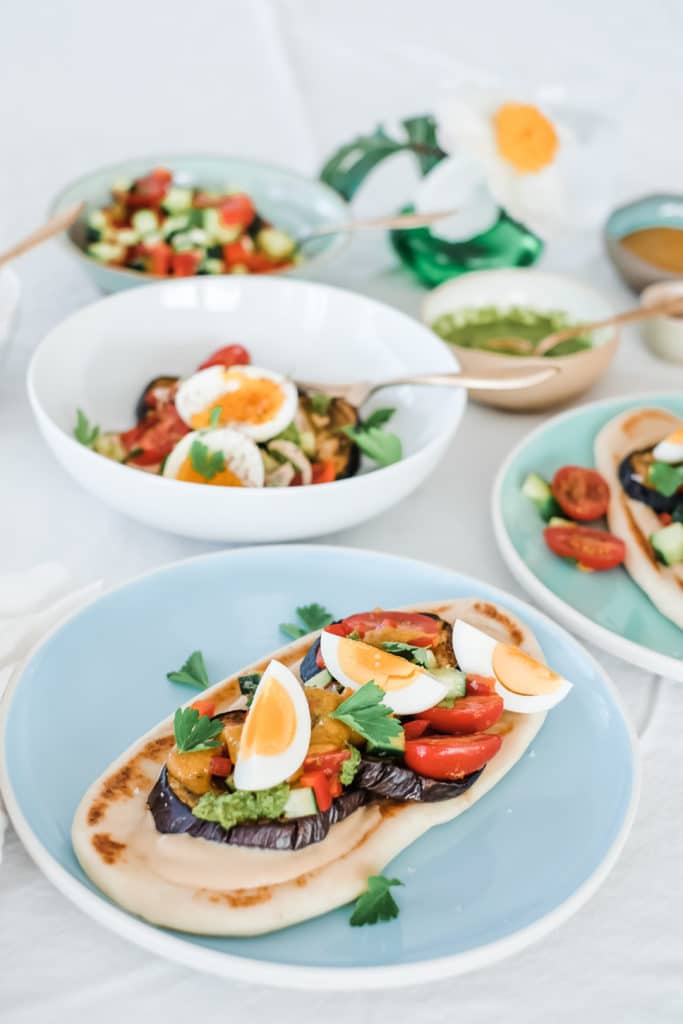
Serves 4
Start by making the tahini sauce, zhug and amba. All of these can be make a day or two ahead of time.
Make the Israeli salad. Do not refrigerate as this will change the flavor of the salad. It's best eaten fresh.
To make the boiled eggs, bring a pot of water to a boil and then drop in the eggs. Reduce the heat to a very low simmer and cook for 8 - 10 minutes, depending on whether or not you want the centers slightly soft. Remove the eggs from the pot and run them under cold water. Peel and quarter.
Preheat the oven to 425 degrees.
Line two baking sheets with parchment paper. Cut the eggplant crosswise into rounds about 1/2 - 3/4" thick. Place the eggplant slices in a single layer on the parchment paper and generously sprinkle with sea salt. Drizzle olive oil over the rounds, about 1 teaspoon per round. Flip the eggplant and repeat with the salt and olive oil on the other size. Place the baking sheets with the eggplant in the oven and roasted until the eggplant is very soft and tender and just starting to caramelize, about 30 to 40 minutes.
While the eggplant is cooking, wrap the pita or naan in aluminum foil and place in the oven to warm for about 10 minutes.
To assemble, lay the naan on a plate and generously cover with tahini sauce. Add a layer of roasted eggplant and then add a little more tahini sauce. Add the egg quarters and a generous scoop of the Israeli salad. Drizzle more tahini if you like, along with a little zhug and amba sauce. Be sure you've tasted your zhug so you know how spicy you made it! Season everything with a little more crunchy, flaky salt and then dig in. Messy is good.
Heat the olive oil in a pot over medium heat. Add the mustard seeds, cumin and coriander. When the mustard seeds start to pop and the spices smell fragrant, reduce the heat to low and add all of the remaining ingredients. Cook for about an hour, until the mango has completely softened and the mixture has thickened.
Remove from heat and cool slightly. Pour the mixture until a blender and blend until smooth. Pour into a jar and store in the refrigerator. The flavors will continue to develop over a day or two. Use within 5 days.
I love when I see an email from a friend, and that’s how I think of you. I hope you feel the same. In my newsletter, I share the kinds of recipes and stories I used to blog about. You’ll get the recipes I’m cooking for my family as well as anything else I think might bring more connection or more joy.